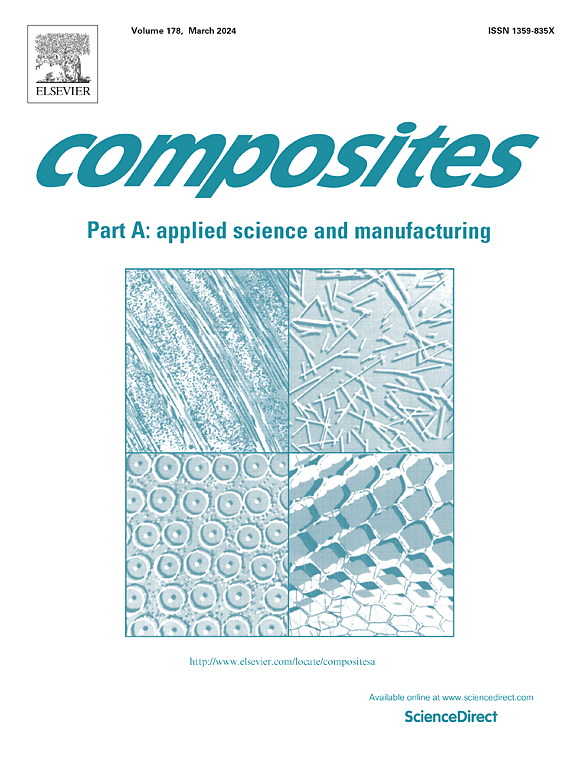Fiber orientation and porosity in large-format extrusion process: The role of processing parameters
IF 8.1
2区 材料科学
Q1 ENGINEERING, MANUFACTURING
Composites Part A: Applied Science and Manufacturing
Pub Date : 2025-03-27
DOI:10.1016/j.compositesa.2025.108891
引用次数: 0
Abstract
Controlling fiber orientation and porosity in short-fiber thermoplastic composites is important for enhancing mechanical, electrical and thermal properties in large-format additive manufacturing. This study employs a factorial design of experiments (DoE) to assess the effects of nozzle diameter (5.08 mm–10.16 mm), temperature (230–250 °C), and extruder screw speed (150–280 rpm) on flow rate, shear rate, porosity, fiber orientation, fiber length and tensile strength in 20 % carbon fiber-filled acrylonitrile butadiene styrene. ANOVA results show that screw speed significantly impacts flow rate, while nozzle diameter and temperature have lesser effects. Shear rate increases with smaller nozzles and higher speeds. Porosity decreases from 5.58 % with a 10.16 mm nozzle to 3.11 % with a 5.08 mm nozzle at 150 rpm due to increased shear rates, which induce shear thinning, reducing viscosity and facilitating gas escape. Larger nozzles (10.16 mm) produce larger, more heterogeneous pores, while smaller nozzles (5.08 mm) yield smaller, uniform pores. Beads produced with the 5.08 mm nozzle exhibit longer fiber lengths due to reduced residence time, lower shear stress, and better alignment. Fiber orientation improves with smaller nozzles due to higher shear rates but decreases with higher screw speeds (280 rpm) due to shorter residence times. The highest fiber alignment (Axx ∼ 0.65) and low porosity (∼3%) were achieved with a 5.08 mm nozzle at 150 rpm, while equivalent additive manufacturing-compression molding samples exhibited better tensile strength (∼93 MPa) under these conditions. These findings emphasize the importance of optimizing processing parameters to enhance fiber alignment and reduce porosity for improved mechanical performance.
求助全文
约1分钟内获得全文
求助全文
来源期刊

Composites Part A: Applied Science and Manufacturing
工程技术-材料科学:复合
CiteScore
15.20
自引率
5.70%
发文量
492
审稿时长
30 days
期刊介绍:
Composites Part A: Applied Science and Manufacturing is a comprehensive journal that publishes original research papers, review articles, case studies, short communications, and letters covering various aspects of composite materials science and technology. This includes fibrous and particulate reinforcements in polymeric, metallic, and ceramic matrices, as well as 'natural' composites like wood and biological materials. The journal addresses topics such as properties, design, and manufacture of reinforcing fibers and particles, novel architectures and concepts, multifunctional composites, advancements in fabrication and processing, manufacturing science, process modeling, experimental mechanics, microstructural characterization, interfaces, prediction and measurement of mechanical, physical, and chemical behavior, and performance in service. Additionally, articles on economic and commercial aspects, design, and case studies are welcomed. All submissions undergo rigorous peer review to ensure they contribute significantly and innovatively, maintaining high standards for content and presentation. The editorial team aims to expedite the review process for prompt publication.
 求助内容:
求助内容: 应助结果提醒方式:
应助结果提醒方式:


